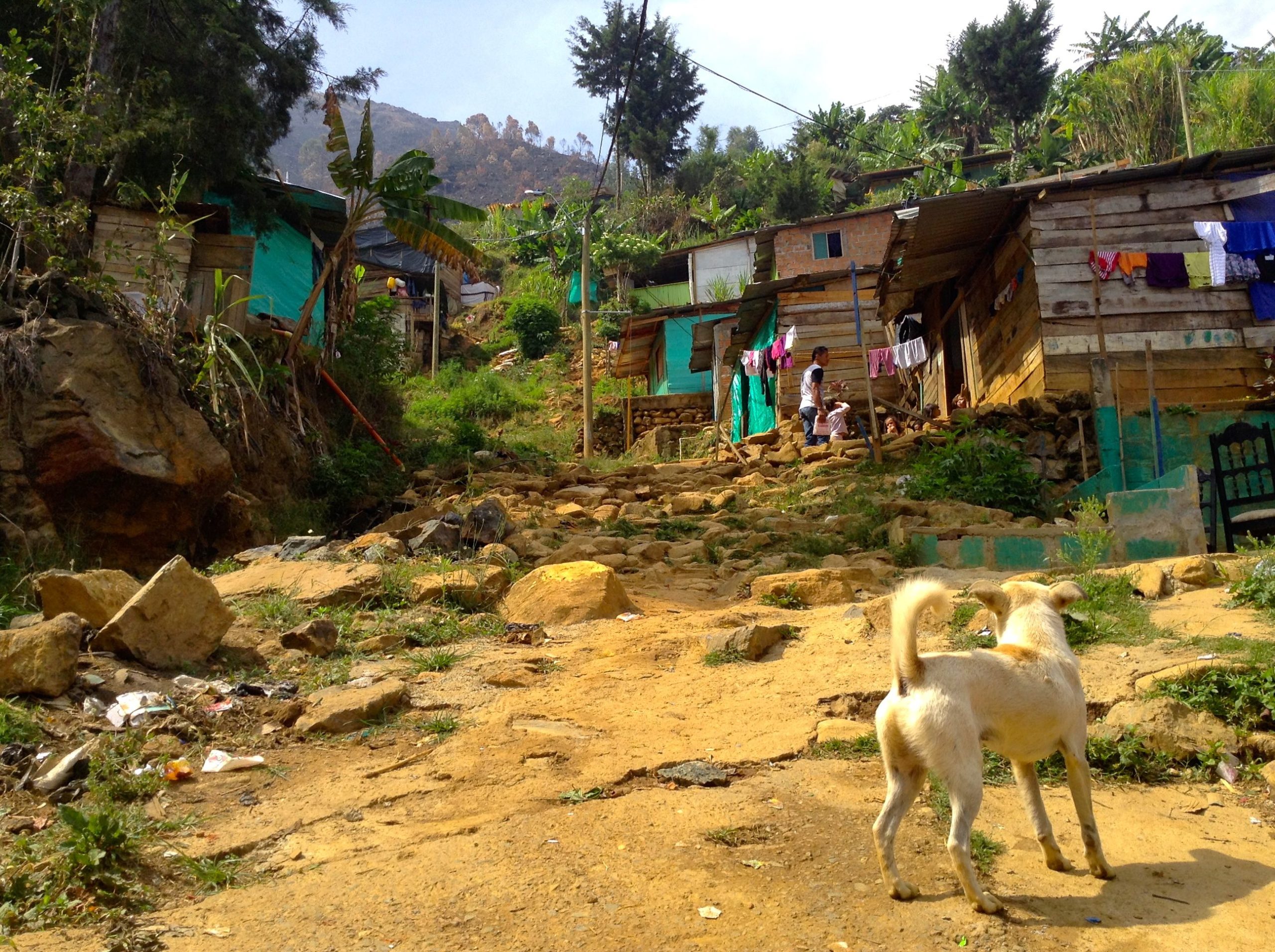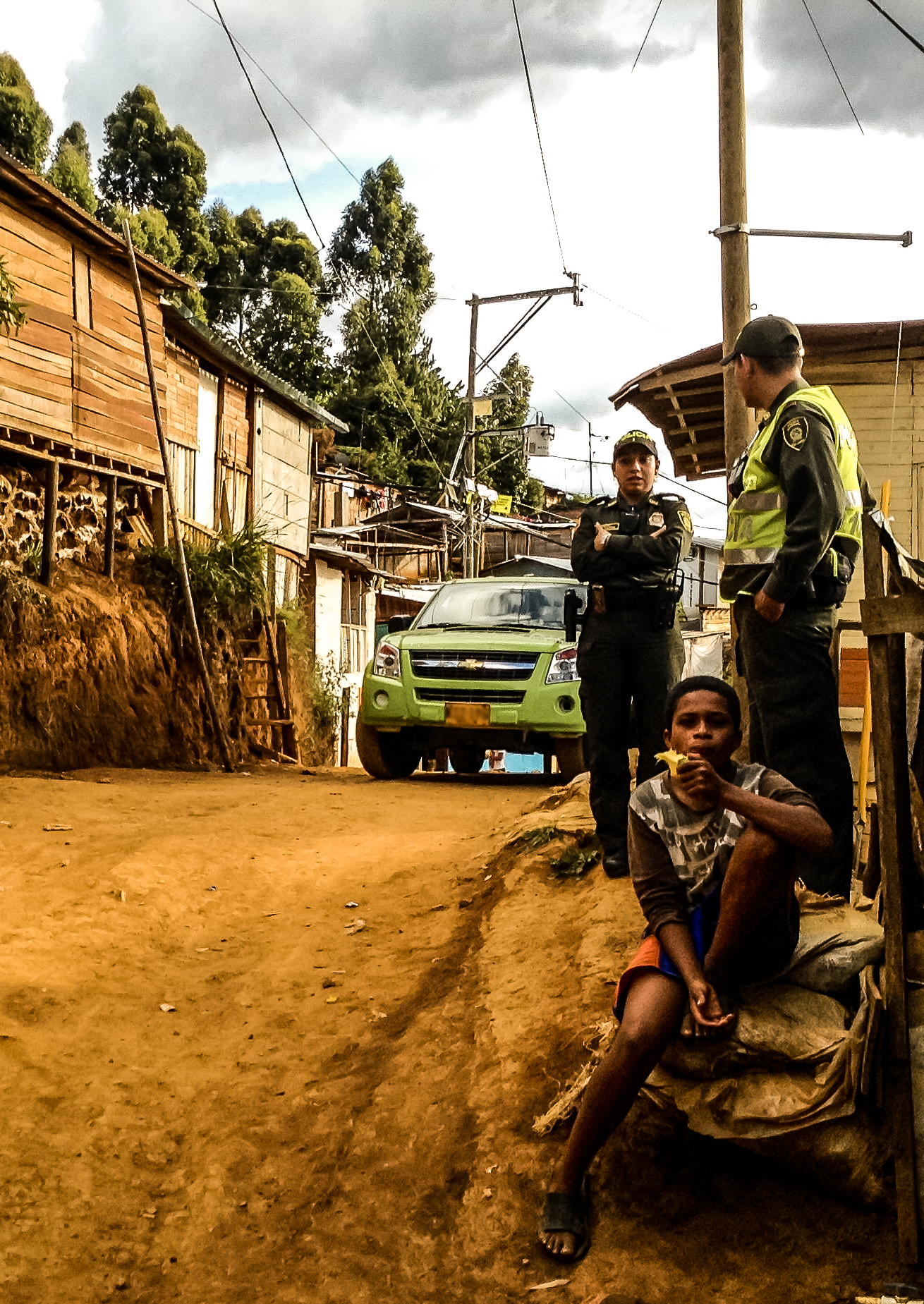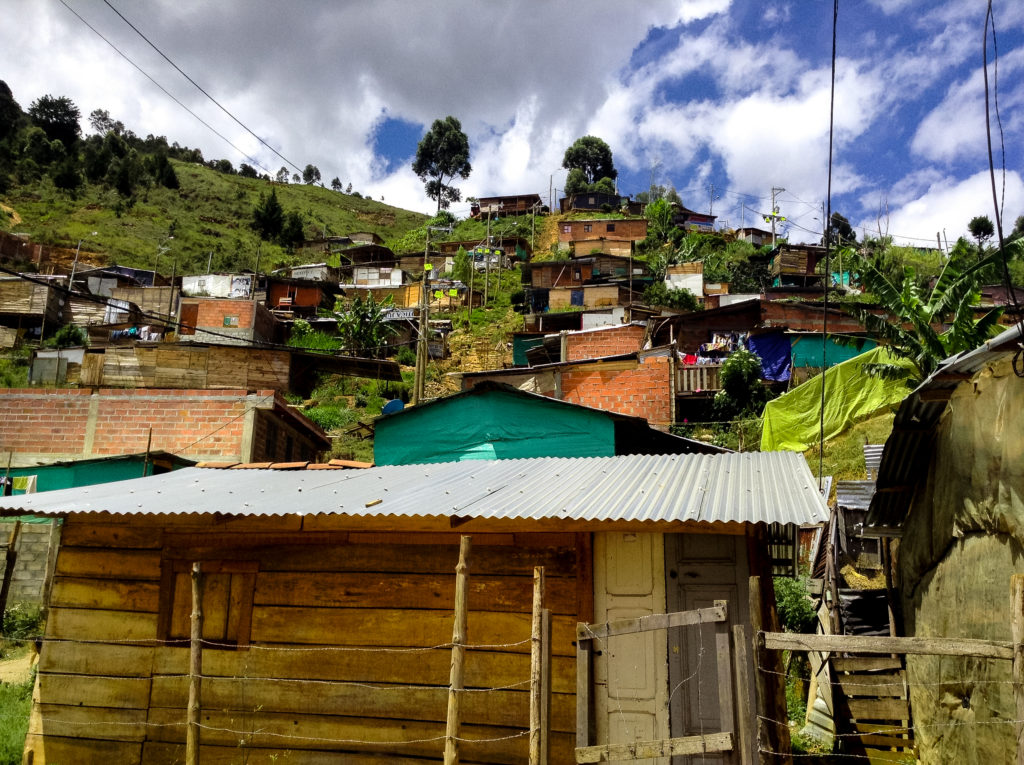What is Double Displacement?

Living in the Periphery
Displaced persons face challenges to full integration into urban life, forcing them into a state of second-class citizenship.
Double Displacement is a form of forced migration consisting of two components. First is displacement from place of origin. Then, after the migrant has resettled, as second displacement occurs due to a variety of factors including urban development projects, rising housing prices, and other tension with local government, gangs or other entities.
This research project explores the experiences of internal and forced migrants and demonstrates the limits of citizenship. It examines the double displacement of small-scale farmers in Colombia and the challenges to integration into the urban city of Medellín.
Centering Medellín
Located in the department of Antioquia, Medellín is Colombia’s second largest city. In the last decade, Medellín has transformed from homicide capital to thriving urban center. While the city’s center is a bustling hub undergoing rapid urbanization, residing in the mountainous outskirts is a large population of displaced persons who have migrated into Medellín after being driven out of their territory in neighboring towns and departments by Colombia’s violent civil conflict.
A Decade of Research in COlombia
Research for the Double Displacement Project draws from ethnographic, survey, and visual approaches to understand the lived experience of double displacement and its impact on the belonging of displaced persons in Colombia.




